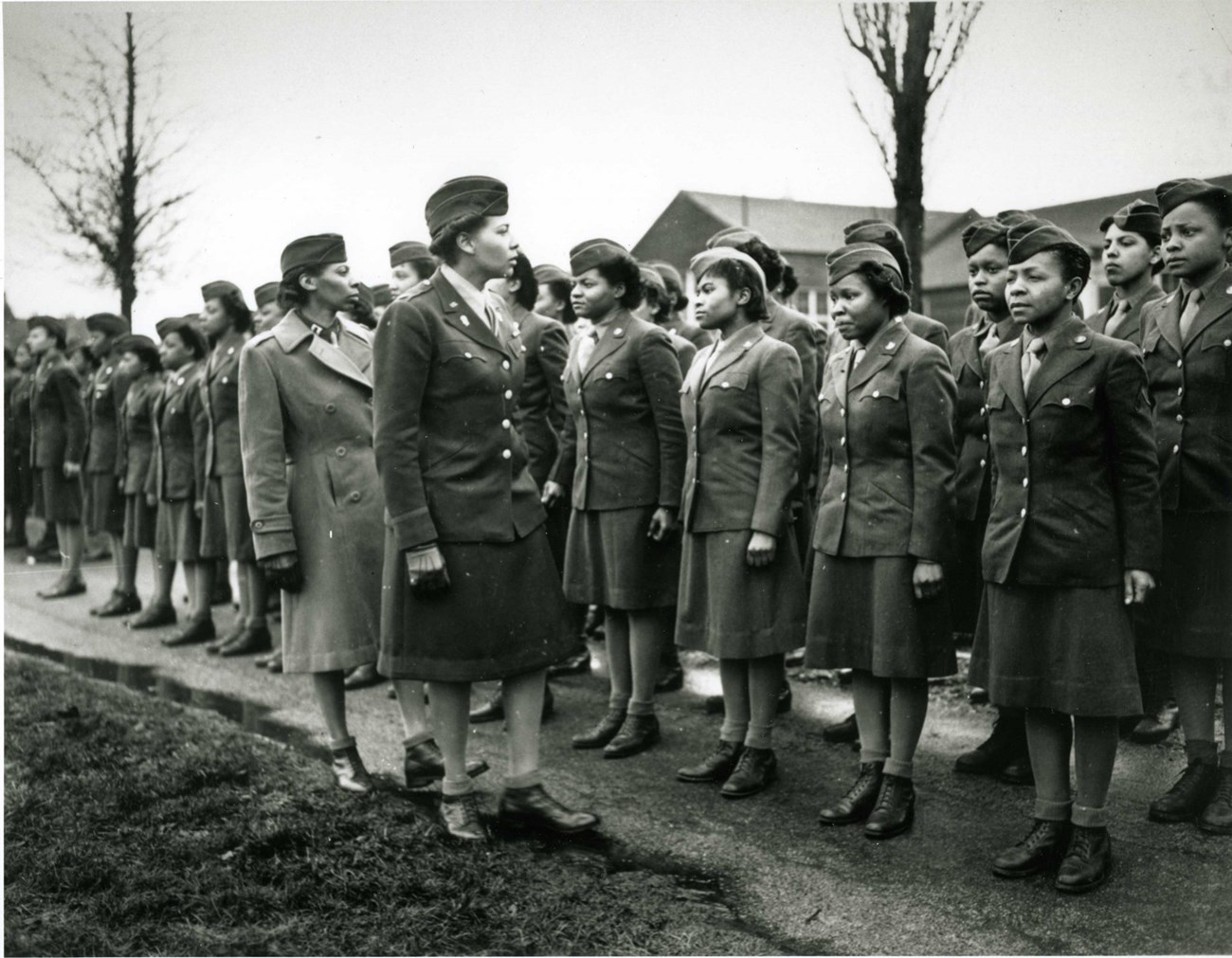Last updated: November 2, 2023
Article
6888th Central Postal Directory Battalion

National Archives
The challenge was to get the mail out in a timely manner. There were postal personnel stationed in Birmingham, but not enough to alleviate the problem. Various African American organizations demanded that Black women in the WAC get the same opportunity to serve overseas. In 1944 the War Department gave in to their demands, and the 6888th Central Postal Directory Battalion was created.
Major Charity Adams (the highest ranking female African American officer) was selected to serve as the battalion leader, and on February 3, 1945, they sailed for Britain. They were met with warehouses full of packages and letters. The buildings lacked sufficient lighting and they were inadequately heated. The windows were covered to prevent them from becoming a target during nighttime raids. The unit was broken into three eight-hour shifts, and they worked seven days a week. Through the challenges they organized the mail by creating information cards with serial numbers for proper identification. They identified mail that was not correctly addressed and used clues to see who it was intended for.
Through heavy work demands, they had to adjust to increased attention. The locals came to watch them at work. They made friends and were welcomed into public spaces. The women stayed in Old King Edward School, and the officers were spread among two houses. Living and eating facilities were segregated by race and gender. Black male soldiers were allowed into a local club for enlisted soldiers, but the Black women soldiers were not. Major Adams led a boycott of the alternative segregated facilities that were offered to the women. They decided to run their own food hall, hair salon, and refreshment bar. The women were subjected to slander spread about by male soldiers who resented that Black women were allowed in the Army.
The 6888th Battalion did not allow those distractions to affect their work. With their system in place, they were able process about 65,000 pieces of mail per shift and cleared the backlog in three months. Their motto was “No mail, low morale.” They focused on getting mail to soldiers and raising their morale. With the inventory in Birmingham cleared, the 6888th Battalion sailed to France after V-E Day. They traveled to Rouen, where they participated in a victory parade. Their unit was stationed in the old French Barracks. Their arrival prompted the attention of many service members, and they had to increase security efforts around their compound.
After clearing the mail backlog in Rouen, the 6888th moved to Paris in October 1945, and they were able to enjoy a “better taste” of living. In February 1946, the unit was sent back to the United States where they received no welcoming ceremony. The 6888th Battalion was the only all-Black Women’s unit to serve overseas. In 1981, a few of the women returned to England to be honored by Birmingham’s mayor. In 1989, Major Adams released a memoir “One Woman’s Army: A Black Officer Remembers the WAC” chronicling her life experiences. In 1996, the Smithsonian Institution National Postal Museum honored Major Adams as the commander of the 6888th Battalion. The 6888th veterans received certificates and letters of appreciation signed by the Army Chief of Staff.
On February 28, 2022, the U.S. House of Representatives voted 422-0 to award the Congressional Gold Medal to the women of the 6888th Central Postal Directory Battalion. The Senate passed a similar measure in 2021, honoring the hard work of the Six Triple Eight.
Tags
- charles young buffalo soldiers national monument
- buffalo soldier
- buffalo soldiers
- world war two
- world war ii
- wwii
- ww2
- african american army
- army
- us army
- african american women
- women
- us army women
- veteran
- veterans
- us army veterans
- ww2 veterans
- african american veterans
- 1940s
- african american history
- womens history
- military history
- 6888th central postal directory battalion
- 6888th
- wac
- women in the military
- military and wartime history
